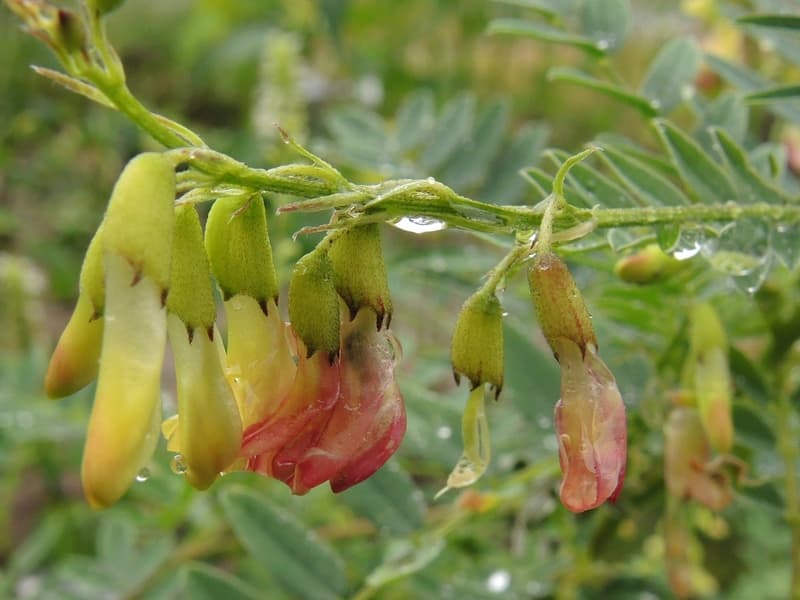
Scientific Name
Astragalus propinquus
Common Names
Astragalus, Huang Qi
Plant Family
Fabaceae
Location
Native to northern and eastern China, Mongolia, and Korea. Grown in well-drained, sandy soils with full sun. A perennial legume that thrives in arid to temperate climates. Not commonly found wild in North America, but cultivated by herbalists.
Description
A tall, hardy perennial with hairy stems and yellow, pea-like flowers that grow in clusters. The root is long, fibrous, and yellowish. Slightly sweet when chewed. Leaves are pinnate and resemble those of other legumes. The plant produces seed pods like its Fabaceae cousins.
Uses
Primarily used as an adaptogen and immune tonic. Builds energy and resilience, especially after illness or during times of long-term stress. Strengthens the Wei Qi (defensive energy) in Traditional Chinese Medicine, making it helpful for people who get frequent colds or have depleted vitality. Supports the lungs and spleen, promotes wound healing, and has mild diuretic and cardiotonic actions. Often added to soups, broths, and long-infused teas.
Energetics
Sweet, slightly warm, tonifying. Deeply nourishing without being overstimulating. Gently builds energy over time. Best for depleted, cold, or weak constitutions.
Parts Used
Root (dried, sliced or shredded)
Constituents
Polysaccharides (especially astragalans), saponins (astragalosides), flavonoids, amino acids, trace minerals. These compounds are responsible for its immune-modulating and adaptogenic effects.
Dosage
- Decoction: 1–2 tablespoons dried root per quart of water, simmered for at least 30–60 minutes.
- Tincture (1:5, 40% alcohol): 30–60 drops, 2–3 times daily for tonic effect.
- Powder: ½–1 tsp in smoothies or food.
- Whole root slices: Can be added to bone broth or long-cooked soups.
Notes on Use
This is one of my favorite daily tonics, especially during cold and flu season. It blends beautifully with reishi, eleuthero, and schisandra for deep immune and adrenal support. Do not use it during active infections — it’s better suited to prevention and rebuilding. Energetically, it feels like a slow, steady ember — not flashy, but reliable. Great for those with chronic fatigue, low immunity, or general “run-down” states.
Harvesting
• Root: Harvested from plants that are at least 3–4 years old. Fall harvest is preferred when the plant's energy returns to the roots. Commercially sourced cultivated root is widely available.
Contraindications
Not recommended during acute infections (may “lock in” pathogens). Avoid in autoimmune conditions unless supervised. Rare mild side effects like digestive upset or dryness in some.
Recipes
- Immune Soup: Astragalus, garlic, reishi, ginger — simmered into bone broth or veggie broth
- Rebuild + Resilience Tea: Astragalus, oatstraw, licorice, eleuthero
- Post-Illness Tonic: Astragalus tincture with schisandra and nettle